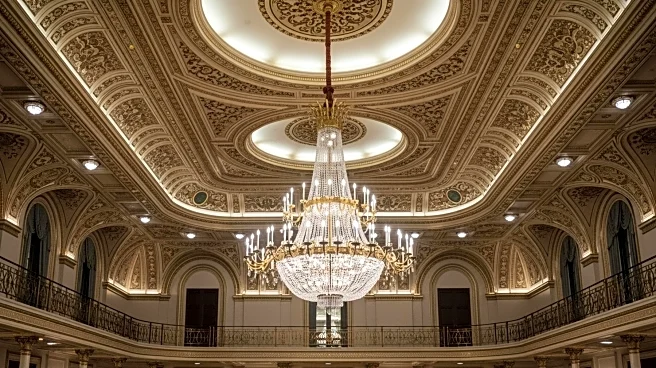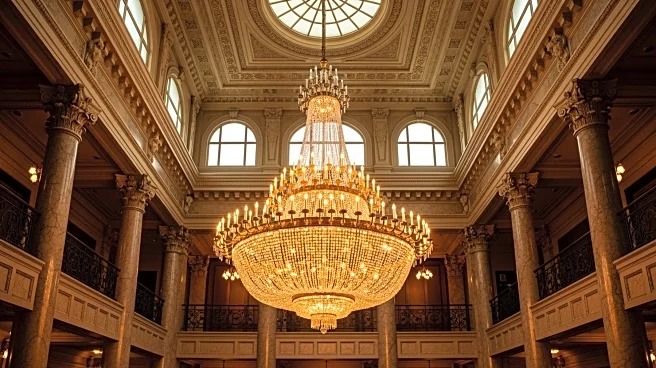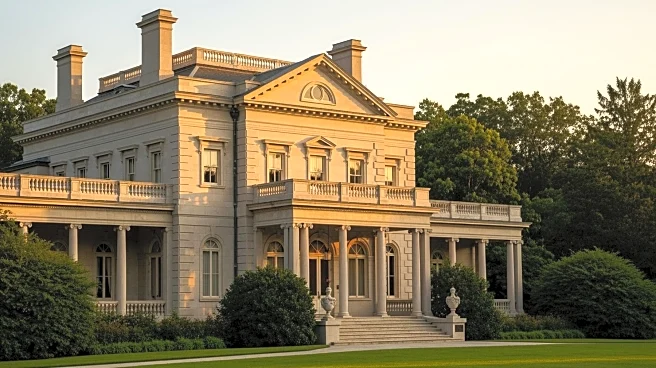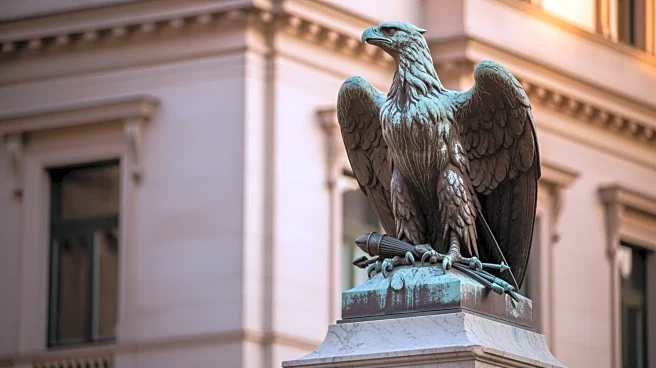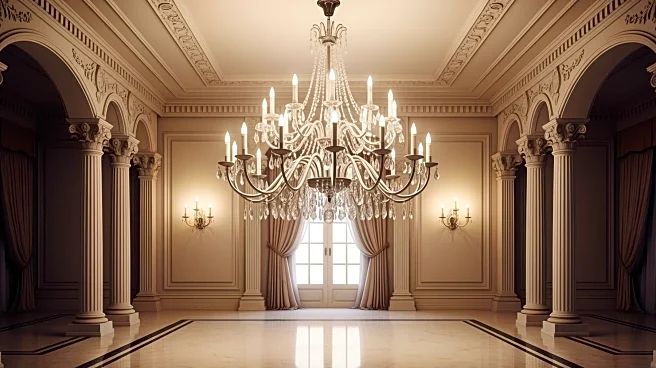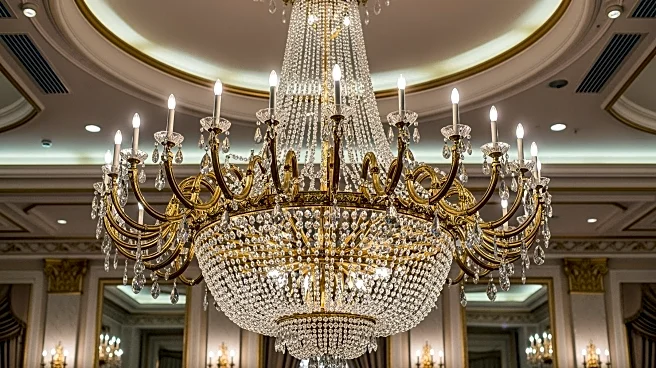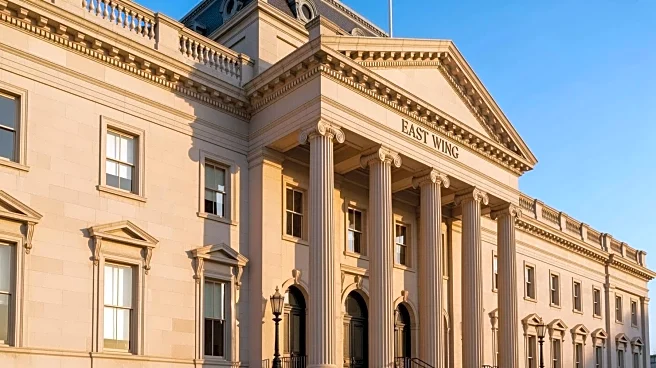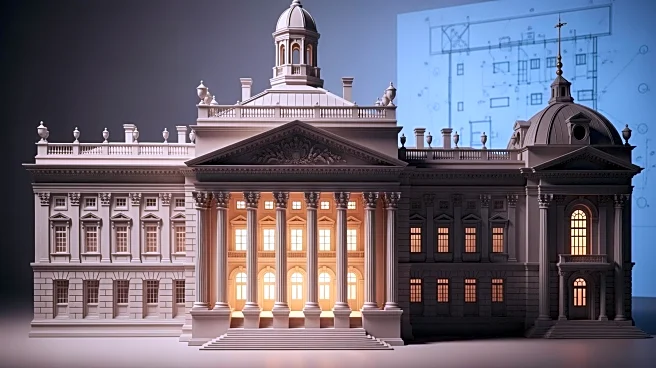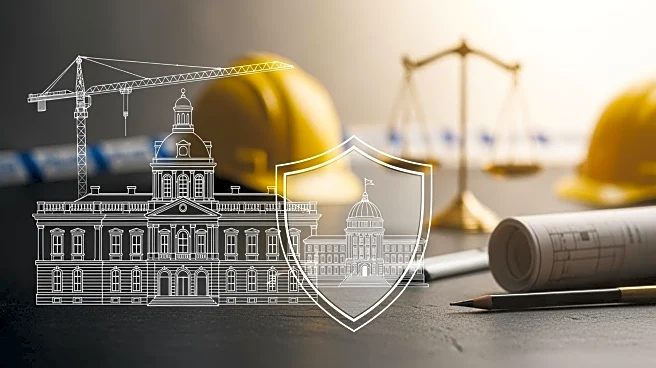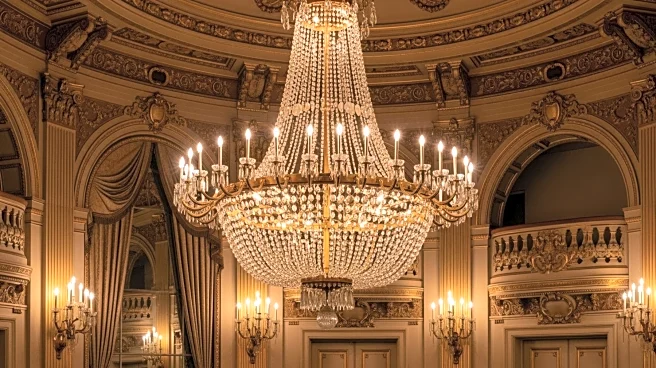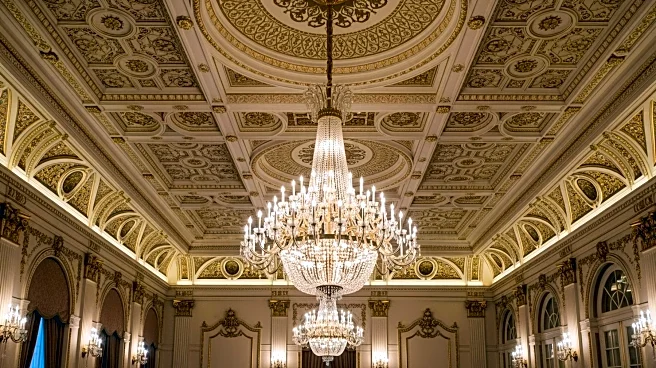What's Happening?
President Trump has expanded plans for a new ballroom at the White House, leading to increased scrutiny over the project's size, scope, and cost. The demolition of the East Wing has begun, with the ballroom set
to be nearly double the size of the White House residence, costing $300 million. The National Trust for Historic Preservation is urging a pause for a public review process, while Democrats criticize the timing during a prolonged government shutdown. The project has attracted donations from major corporations, including Comcast Corp.
Why It's Important?
The expansion of the ballroom project raises concerns about fiscal responsibility and priorities during a government shutdown. Critics argue that the expenditure sends a negative message amid economic challenges, potentially affecting public perception of the administration's handling of financial matters. The involvement of corporate donors highlights the intersection of politics and business, with implications for transparency and accountability in government projects.
What's Next?
The project may face legal challenges and public opposition, particularly from preservationists and political opponents. The administration's response to these criticisms could influence future infrastructure projects and government spending decisions. The ongoing government shutdown adds pressure to resolve funding issues, with potential impacts on public services and economic stability.
Beyond the Headlines
The ballroom project reflects broader themes of presidential legacy and the use of public spaces for personal or political purposes. The debate over historic preservation versus modernization raises ethical questions about the stewardship of national landmarks. The project's timing during a shutdown underscores the complexities of governance and the balancing of priorities in times of crisis.
